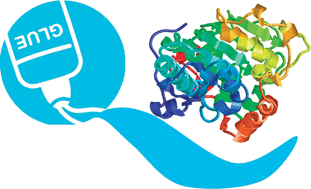Understanding enzyme immobilisation
Abstract
Enzymes are versatile

* Corresponding authors
a
Gebouw voor Scheikunde, Afdeling Biotechnologie, Technische Universiteit Delft, Julianalaan 136, Delft, The Netherlands
E-mail:
u.hanefeld@tudelft.nl
Fax: ++31 (0)15 278 1415
Tel: ++31 (0)15 278 9304
b Laboratory of Applied and Computational Biocatalysis, Dipartimento di Scienze Farmaceutiche, Università degli Studi, P. le Europa 1, Trieste, Italy
c Department of Chemical and Environmental Sciences, Materials and Surface Science Institute, University of Limerick, Limerick, Ireland
Enzymes are versatile

 Please wait while we load your content...
Something went wrong. Try again?
Please wait while we load your content...
Something went wrong. Try again?
U. Hanefeld, L. Gardossi and E. Magner, Chem. Soc. Rev., 2009, 38, 453 DOI: 10.1039/B711564B
To request permission to reproduce material from this article, please go to the Copyright Clearance Center request page.
If you are an author contributing to an RSC publication, you do not need to request permission provided correct acknowledgement is given.
If you are the author of this article, you do not need to request permission to reproduce figures and diagrams provided correct acknowledgement is given. If you want to reproduce the whole article in a third-party publication (excluding your thesis/dissertation for which permission is not required) please go to the Copyright Clearance Center request page.
Read more about how to correctly acknowledge RSC content.
 Fetching data from CrossRef.
Fetching data from CrossRef.
This may take some time to load.
Loading related content
